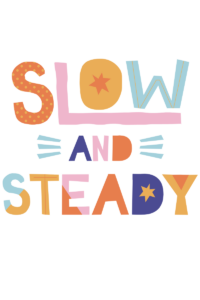Even and odd often get shoved into a curriculum as a few lessons. These lessons also get compacted into a couple of days of learning a skip counting pattern to remember which numbers are even and which are odd.
Perhaps the lessons are condensed because they don’t seem to be an imperative skill for students to learn. However, making these lessons sub-standard means that students are missing valuable information that is essential for them to explore. You might be thinking “Yeah right, it’s just even and odd. What’s the big deal?”
Identifying even and odd numbers is an important skill that helps children understand our number system and provides them aids in their preparation for whole number operations.
So what do teachers need to know about even and odd?
1. Students need concrete exploration.
The definition of an even number is a number that can be divided or split into two equal groups. Of course for your little ones, you may not want to describe it as division instead you can say, “It is a number that can be paired up without any left over”. Odd numbers always have a remainder. This concept can be explored through the use of manipulatives or math tools.
2. Where we start to skip count from matters.
Students typically leave this unit only knowing that 0, 2, 4, 6, 8 are even numbers. But that is not the definition of even numbers. It’s not enough to say, “If you count by 2’s you land on an even number such as 0, 2, 4, 6, 8”. A first-grader I was talking to the other day pointed out to another student. “If you count by 2’s starting with the number 1 you don’t get even numbers you get odd ones”. These are the discoveries we want students to make.

3. It’s not about skip counting, it’s about patterns.
Pattern explorations are what I usually find missing from curriculums. The whole point of teaching even and odd is for the mathematical patterns they contribute to. For example:

These patterns also extend to multiplication, prime numbers, etc.

Most curriculums lack these types of problems.
4. Why do we look at the last digit to find even or odd?
This lesson is often skipped by educators. We tell students to look at the last place value to find if a number is even or odd, but WHY do we look at that digit specifically? Do we teach that? What’s your response to a student who wants to know why the last place value matters.
Here’s what we should be saying? When looking at all the place values besides the ones place, you will find that they could always be partitioned into two equal groups (specifically whole numbers) without any remainders. The ones place is the only place value that could have a remainder. For example:

Try to find a way to incorporate some of these lessons into your even and odd unit. Avoid using the typical tricks. And rip down posters that revolve around skip counting. Instead, put up anchor charts with these new approaches.
Looking to learn more? Check out these resources.
- Common Mistakes In Teaching Elementary Math
- About Teaching Mathematics
- Mathematics Rebooted
- Odd or Even
Want to check out more?
MEMBERSHIP SITE:
https://zennedmath.com/online-courses/
FACEBOOK GROUP: Zenned Math Teachers
https://www.facebook.com/groups/zennedmathteachers/
YOUTUBE CHANNEL: Zenned Math
https://www.youtube.com/channel/UC5njH_5LoK6G67BvZecGfnw?
WANT ME IN YOUR INBOX? Sign up for my newsletter
https://view.flodesk.com/pages/5efc876dcaabca0028b95eb5
DISCLAIMER: Some links included in this blog might be affiliate links. If you purchase a product or service with the links that I provide, I may receive a small commission. There is no additional charge to you!

